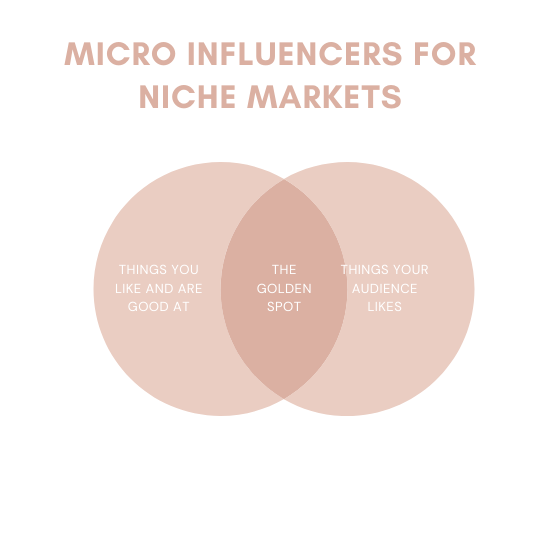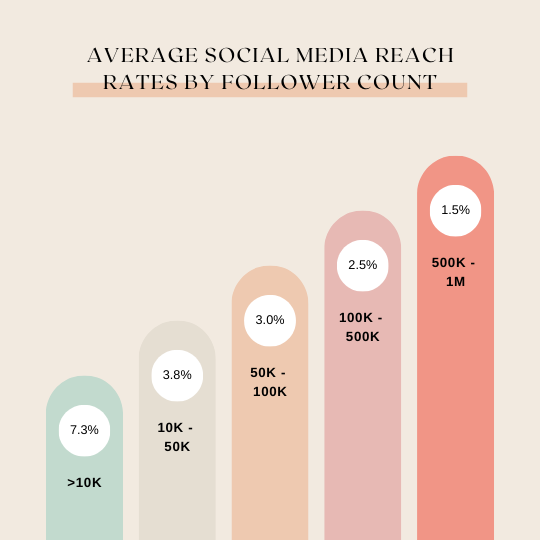In the world of influencer marketing, choosing between micro and macro influencers can be a challenging decision for brands. Both types of influencers offer unique advantages and considerations, but understanding which the right fit for your brand is requires careful analysis.
In this article, we will explore the differences between micro and macro influencers, evaluating factors such as reach, engagement, cost, target audience, authenticity, content quality, campaign goals, and more.
By the end, you’ll have a better understanding of which influencer category aligns best with your brand’s marketing objectives.
Defining Micro and Macro Influencers

In the realm of influencer marketing, understanding the distinction between micro and macro influencers is crucial. Micro influencers are individuals with a relatively modest follower count, typically ranging from a few thousand to around 50,000 followers.
They have carved out a niche for themselves within specific industries or communities, fostering deep connections and engagement with their audience. Micro influencers often possess specialized knowledge and expertise, allowing them to offer highly targeted content and recommendations to their followers.
On the other hand, macro influencers are characterized by their substantial following, often exceeding 100,000 followers and sometimes reaching millions. They have a more extensive reach and can impact a broader audience.
Macro influencers often operate within popular niches or have a more general appeal that transcends specific industries. Their influence is derived from their broad reach and the ability to capture the attention of a diverse range of followers.
The defining factor between micro and macro influencers lies in the size of their audience and the level of specialization within their content. Micro influencers cater to niche markets and offer tailored recommendations, while macro influencers command a broader reach and appeal to a wider audience.
Understanding this distinction is crucial when devising an influencer marketing strategy tailored to your brand’s objectives and target audience.
Reach and Engagement

When it comes to influencer marketing, evaluating the reach and engagement of influencers is essential for selecting the right partnership. Reach refers to the size of an influencer’s audience and the potential number of people exposed to your brand’s message.
Macro influencers, with their substantial follower base, offer a broader reach and the opportunity to amplify brand visibility across a larger audience. Their posts and content have the potential to generate higher impressions and reach metrics.
On the other hand, micro influencers may have a smaller following, but they often excel in engagement. Engagement measures the level of interaction and connection between an influencer and their audience. Micro influencers tend to foster a strong sense of community and authenticity, resulting in higher engagement rates.
Their smaller audience allows for more personalized interactions, genuine conversations, and meaningful connections with their followers. This engagement can translate into higher levels of trust and a more receptive audience for your brand’s message.
When deciding between micro and macro influencers, consider your campaign goals and target audience. If you’re looking to maximize brand exposure to a broad audience, macro influencers can offer greater reach.
However, if building genuine connections, fostering engagement, and leveraging the trust of a niche community aligns better with your brand, micro influencers may be the preferred choice.
Target Audience

Understanding your target audience is a critical factor when deciding between micro and macro influencers for your influencer marketing campaign. Both types of influencers cater to different audience segments and have unique advantages in reaching specific demographics.
Micro influencers often specialize in niche markets and communities. They have built a dedicated following within a specific industry or interest group. Collaborating with micro influencers allows you to tap into their expertise and connect with a highly targeted audience that shares common interests.
If your brand operates within a niche industry or targets a particular customer segment, partnering with micro influencers can ensure your message reaches the right audience with precision.
On the other hand, macro influencers have a broader appeal and can reach a wider audience. Their larger follower count extends their reach beyond specific niches, making them suitable for brands with mass-market products or services.
If your brand aims to increase brand awareness and capture the attention of a broader customer base, collaborating with macro influencers can provide the visibility and exposure you seek.
Influencer Selection

Selecting the right influencers for your influencer marketing campaigns is a crucial step that significantly impacts the success of your efforts. When choosing between micro and macro influencers, consider the following factors to make an informed decision:
- Relevance: Look for influencers whose content aligns with your brand’s values, niche, and target audience. Ensure that their expertise, interests, and style resonate with your brand’s message and objectives.
- Engagement: Assess the level of engagement influencers have with their audience. Look for indicators such as comments, likes, shares, and overall interaction. High engagement demonstrates that the influencer has an active and responsive audience.
- Authenticity: Seek influencers who prioritize authenticity and have built a genuine connection with their followers. Evaluate their ability to communicate transparently, their credibility within their niche, and their ability to maintain trust with their audience.
- Reach: Consider the reach and size of the influencer’s following. Micro influencers may have a smaller audience, but their engagement levels are often higher. Macro influencers, on the other hand, offer broader exposure to a larger audience.
- Content Quality: Evaluate the quality of the influencer’s content, including the visual aesthetics, storytelling ability, and production value. Look for influencers who consistently produce high-quality content that aligns with your brand standards.
- Brand Fit: Ensure that the influencer’s personal brand aligns with your brand’s image, values, and target audience. Collaborating with influencers whose personal brand is congruent with your brand helps maintain authenticity and strengthens the connection with their followers.
- Track Record: Consider the influencer’s past collaborations, partnerships, and campaigns. Assess their track record of success, the impact they have had on previous brand collaborations, and their ability to deliver results.
- Budget: Evaluate the cost of working with different influencers and determine how it fits within your allocated budget. Remember that while macro influencers may have higher fees, they can offer greater reach, while micro influencers often provide more cost-effective options.
Micro Influencers for Niche Markets

Micro-influencers are highly valuable for reaching and engaging with niche markets. Their expertise, passion, and close connection with their audience make them ideal brand advocates within specific industries or interest areas.
Here’s why micro influencers are particularly effective for targeting niche markets:
- Specialized Knowledge: Micro influencers often possess specialized knowledge and deep expertise within their niche. Their in-depth understanding of the industry or interest area allows them to create highly relevant and informative content that resonates with their audience. This targeted approach enables brands to connect with a highly engaged and receptive audience within a specific niche.
- Authenticity and Relatability: Micro influencers are seen as relatable figures within their niche communities. They have built a genuine and authentic connection with their followers, often positioning themselves as peers or experts. Their recommendations and endorsements are perceived as more trustworthy and credible, making it easier for brands to establish a sense of authenticity and build trust among their target audience.
- Engagement and Influence: Micro influencers typically have higher engagement rates compared to macro influencers. Due to their smaller follower count, they can dedicate more time and attention to interacting with their audience. This higher level of engagement results in more meaningful conversations, increased brand loyalty, and a greater potential for driving conversions within the niche market.
- Cost-Effective Solutions: Collaborating with micro influencers is often more cost-effective compared to macro influencers. Their fees tend to be lower, making them an attractive option for brands with limited budgets or those seeking to allocate resources efficiently. Brands can work with multiple micro influencers simultaneously, allowing for broader coverage within the niche market.
- Niche Community Influence: Micro influencers are integral members of their niche communities. Their followers look to them for guidance, recommendations, and the latest trends within the specific industry or interest area. By partnering with micro influencers, brands can tap into these established communities and leverage the influencer’s influence to reach a highly targeted audience.
Macro Influencers for Mass Reach

Macro influencers are highly effective when it comes to achieving mass reach and engaging with a broader audience. Their large follower base and widespread popularity make them an ideal choice for brands looking to expand their reach and increase brand visibility.
Here’s why macro influencers are particularly impactful for mass reach:
- Wide Audience Reach: Macro influencers have a substantial follower count, often ranging from hundreds of thousands to millions. Their extensive reach enables brands to expose their products or services to a larger audience, potentially reaching a diverse demographic. This wide audience reach can be especially valuable for brands aiming to generate widespread brand awareness and capture a larger market share.
- Brand Recognition and Trust: Macro influencers are often recognized figures within their respective industries or interest areas. Their popularity and established presence create a sense of credibility and trust among their followers. By collaborating with macro influencers, brands can leverage their influence to enhance brand recognition and tap into the existing trust and loyalty their followers have towards the influencer.
- Mass Appeal and Versatility: Macro influencers often have a broad appeal that transcends specific niches. They can cater to a wide range of interests and industries, making them suitable for brands with mass-market products or services. Their versatility allows for broader content creation that can resonate with a diverse audience, increasing the chances of capturing the attention of a larger consumer base.
- Amplified Engagement and Exposure: Due to their larger following, macro influencers have the potential to generate higher engagement rates in terms of likes, comments, and shares. When macro influencers endorse a brand or product, their posts tend to receive significant visibility and interaction. This increased engagement can lead to heightened brand exposure, organic reach, and the potential for viral content.
- Influence Beyond Social Media: Macro influencers often have a multi-platform presence beyond social media platforms, such as television appearances, collaborations with mainstream media, or involvement in offline events. Partnering with macro influencers can provide opportunities for brand collaborations that extend beyond social media channels, allowing for a more diverse and comprehensive marketing approach.
When selecting macro influencers for mass reach, it’s important to consider their alignment with your brand values, relevance to your target audience, and the quality of their content. Look for macro influencers who have a genuine connection with their followers, consistently produce high-quality content, and maintain an authentic brand image.
Collaborating with macro influencers who resonate with your brand can help maximize the impact of your influencer marketing campaigns.
Finding the Right Balance

When deciding between micro and macro influencers for your influencer marketing strategy, finding the right balance is crucial. Both types of influencers offer unique advantages, and a well-rounded approach can yield optimal results.
Here’s how to strike the right balance:
- Campaign Objectives: Consider your campaign objectives and target audience. If your goal is to reach a niche market or create highly targeted content, micro influencers may be the ideal choice. On the other hand, if you aim for mass reach and broader brand exposure, macro influencers can provide the necessary visibility.
- Budget Allocation: Evaluate your budget and allocate resources accordingly. While macro influencers often come with higher fees, their larger following can provide significant reach. Micro influencers, with their lower costs, allow for multiple collaborations and targeted engagement. Finding a balance within your budget will help maximize your campaign’s effectiveness.
- Audience Engagement: Assess the level of engagement you seek from influencers. Micro influencers generally have higher engagement rates due to their close-knit communities. Their followers are more likely to actively interact and respond to their content. Macro influencers, while reaching a broader audience, may have lower engagement rates. Consider your engagement goals and choose influencers accordingly.
- Content Relevance: Evaluate the relevance of influencer content to your brand. Micro influencers often specialize in specific niches, allowing for more precise alignment. Macro influencers, while having a wider appeal, may require careful selection to ensure their content aligns with your brand’s values and message.
- Diversify Your Strategy: Consider implementing a combination of micro and macro influencers in your campaign. This hybrid approach can help you reach different segments of your target audience. By diversifying your influencer selection, you can tap into niche markets while also gaining broader exposure.
- Track Performance: Monitor and analyze the performance of your influencer collaborations. Evaluate the reach, engagement, and conversion metrics of both micro and macro influencers. This data-driven approach will help you identify the most effective influencers for future campaigns and refine your strategy.
Conclusion
In the realm of influencer marketing, choosing between micro and macro influencers requires careful consideration of various factors. Each category brings its unique advantages and considerations, depending on your brand’s goals, budget, target audience, and campaign objectives.
Micro influencers thrive in niche markets, fostering authenticity and engagement, while macro influencers excel at mass reach and visibility. Striking the right balance and selecting influencers that align with your brand values and goals will help you achieve an impactful influencer marketing strategy.




[…] Influencer marketing is powerful for engagement. Work with relevant influencers and brand advocates in your niche to create co-branded content or promote your brand to their engaged follower base. […]